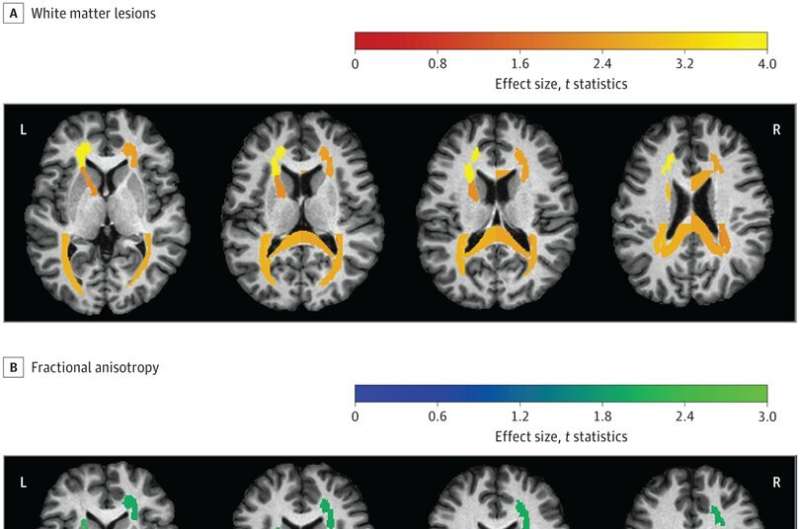
Intensive blood pressure treatment significantly reduces the risk of adverse cerebrovascular events such as stroke. New research from The University of Texas Health Science Center at San Antonio (UT Health San Antonio) shows evidence of how the brain benefits from consistently lower blood pressure.
The study, published in JAMA Network Open, is a follow-up analysis of the Systolic Blood Pressure Intervention Trial (SPRINT), a multicenter clinical trial that compared intensive systolic blood pressure control (target less than 120 mm Hg) versus standard control (target less than 140 mm Hg). SPRINT enrolled participants aged 50 or older with hypertension and without diabetes or a history of stroke.
“Our study demonstrates that lowering systolic blood pressure to below 120 mm Hg is more effective in preserving brain health compared to standard treatment goals,” said corresponding author Mohamad Habes, Ph.D., assistant professor of radiology and director of the neuroimaging core at the Glenn Biggs Institute for Alzheimer’s and Neurodegenerative Diseases.
The Biggs Institute at UT Health San Antonio, in collaboration with The University of Texas Rio Grande Valley, is the state’s only National Institute on Aging-designated Alzheimer’s Disease Research Center (ADRC).
Patients receiving intensive blood pressure treatment showed reduced white matter lesions in frontal and posterior deep white matter, and improved blood flow, indicating better overall brain health, Habes said. White matter lesions are among the changes that can be associated with Alzheimer’s disease, non–Alzheimer’s disease cognitive impairment and advanced brain aging, he said.
The paper highlights that intensive blood pressure treatment can slow down vascular brain injury, potentially contributing to the preservation of cognitive function in older adults, said Tanweer Rashid, Ph.D., of the Biggs Institute’s neuroimage analytics laboratory and neuroimaging core.
“Our study shows that specific areas have greater benefit, representing sensitive regions to track in future trials evaluating small-vessel disease,” Rashid said.
The paper acknowledges the need for further research to determine the optimal blood pressure targets and treatment strategies for various population groups and to assess potential side effects of intensive blood pressure treatment, Habes said.
Will Sansom, University of Texas Health Science Center at San Antonio

